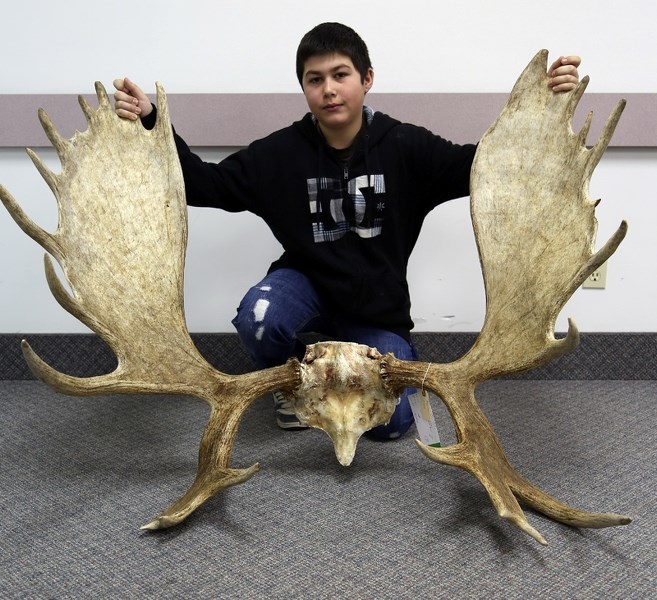You never forget your first kill when out hunting.
But when your first kill gets you in a record book, it’s something everyone is going to remember. That’s the story Brayden Fibke, 12, is going to be able to tell for years to come after he bagged an 800-pound moose as his first kill when out hunting with his dad last October.
“It felt really good,” he said about taking down such a big animal. “I was excited.”
Fibke brought his kill’s antlers to the Busby and District Fish and Game Associations fifth annual Antler Scoring and Tradeshow Feb. 2 at the Westlock and District Community Hall.
It was such an impressive rack that it was judged to be one of the best recorded, and earned Fibke a spot in the Boone and Crockett record book.
The story behind the rack started on Oct. 2, when he and his father were out hunting. That day, they found signs of animals, but no animals themselves.
They went back out the next day, and ended up finding a cow and her calf in a field.
Fibke said they starting calling the moose, which started to get closer.
He then saw something in the bush.
“I thought it was a deer,” he said.
His dad called it and that’s when they saw it was a moose.
Fibke shot it, and it slouched over a bit but stayed on its feet. It started to run, so his dad shot in front of it, stopping the animal in its tracks.
At that point he shot it again and it keeled over.
That moose’s rack was the talk of the show over the weekend, as it was the largest set of antlers brought in for scoring and display.
Association member Brian Yagos said this year’s show was a bit slower than in previous years, with about 75 people having come through the doors and 22 sets of antlers having been brought in during the first half of the day.
There were five Boone and Crockett judges set up in the Alberta Room to examine all horns and antlers brought in. Their job was to score each entry, and if it received a high enough score, recommend it for entry in the record book.
Judge Cecil Andersen said how he judges starts by looking at the rack and determining whether it should be considered “typical” or “non-typical.” The primary difference is how symmetric a rack is on first glance — it’s “typical” if it’s very symmetric, and “non-typical” if clearly asymmetric.
From there, he measures the number of points and pairs them off. For a “typical” rack, any extra, non-matching points are deductions. A “non-typical” rack allows the unmatched points to count towards the final score.



